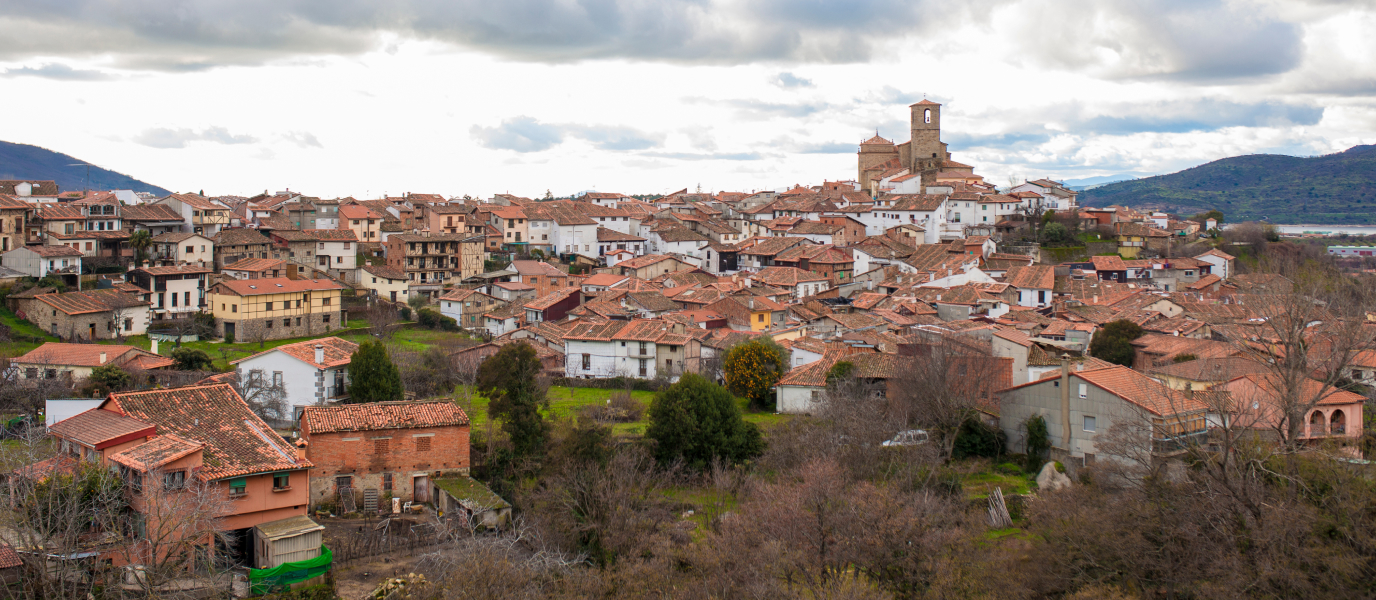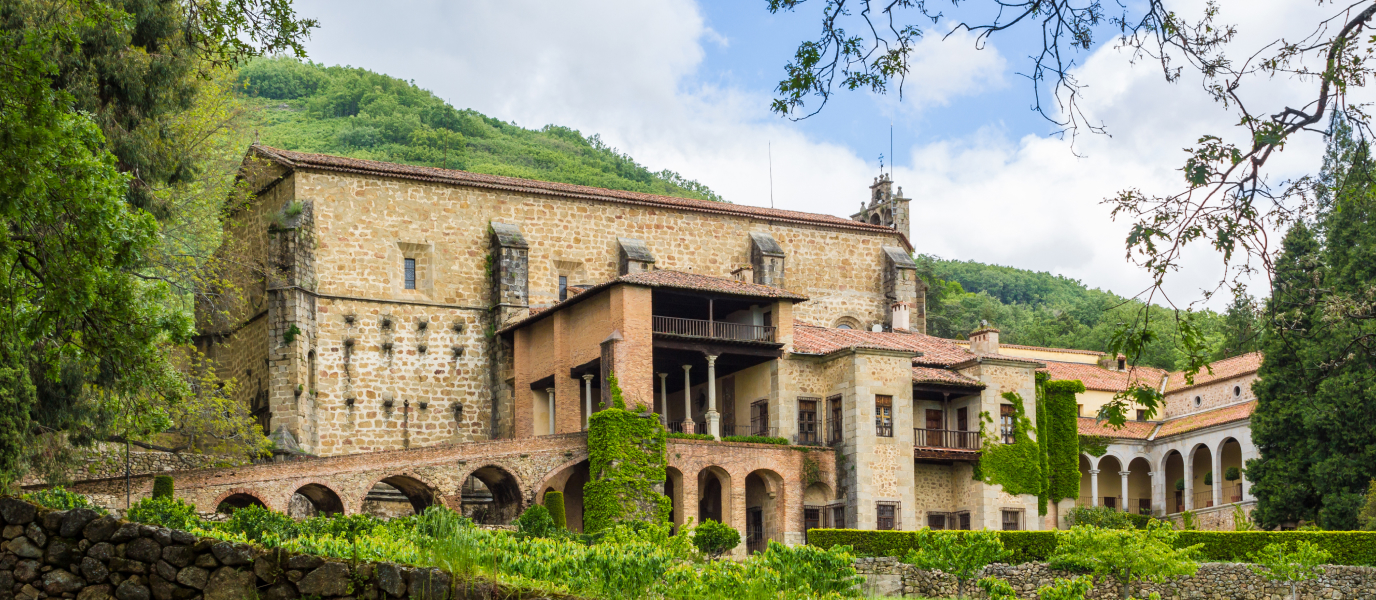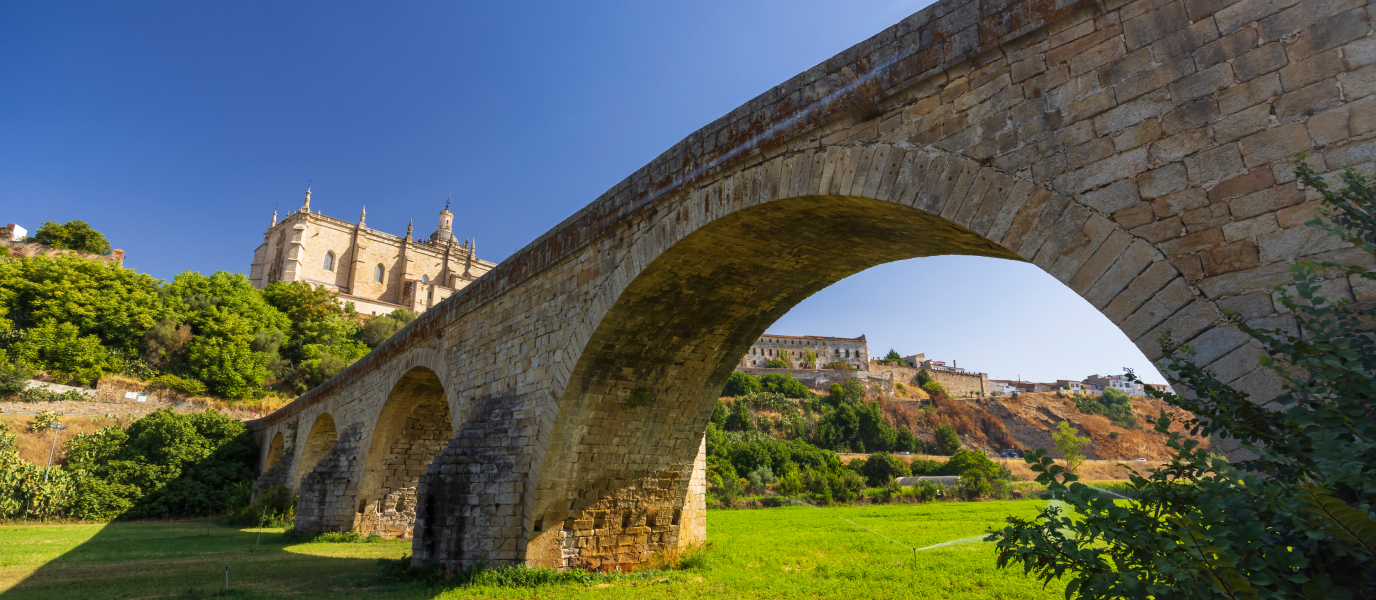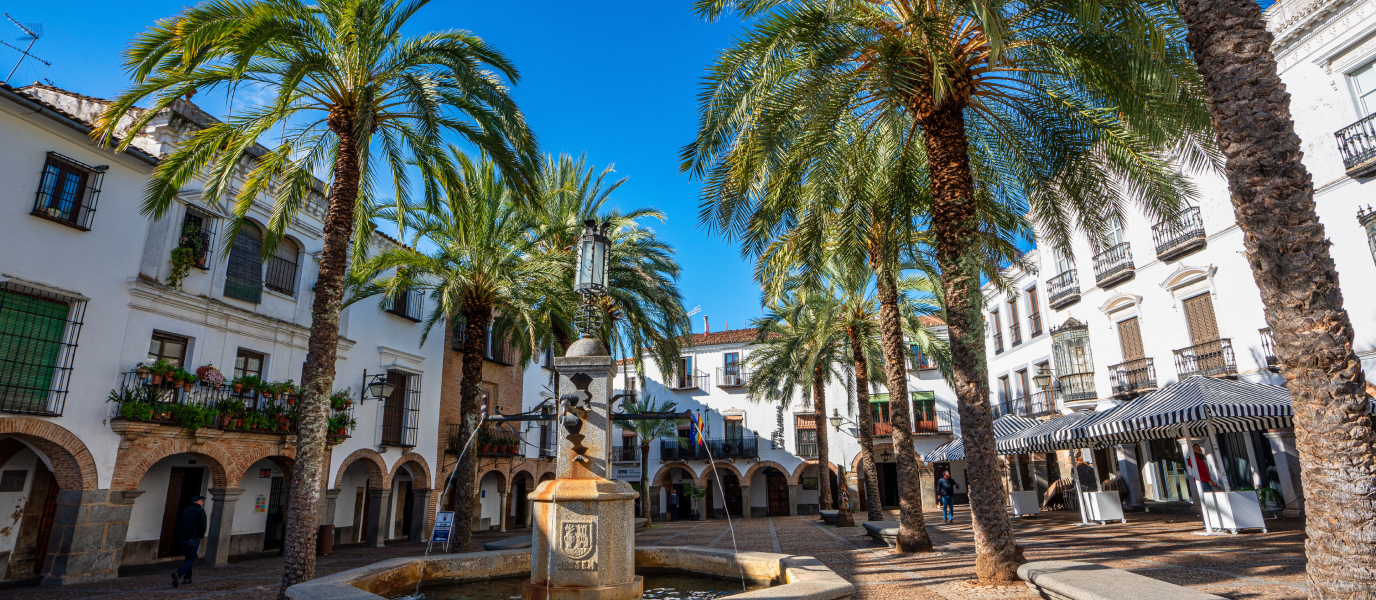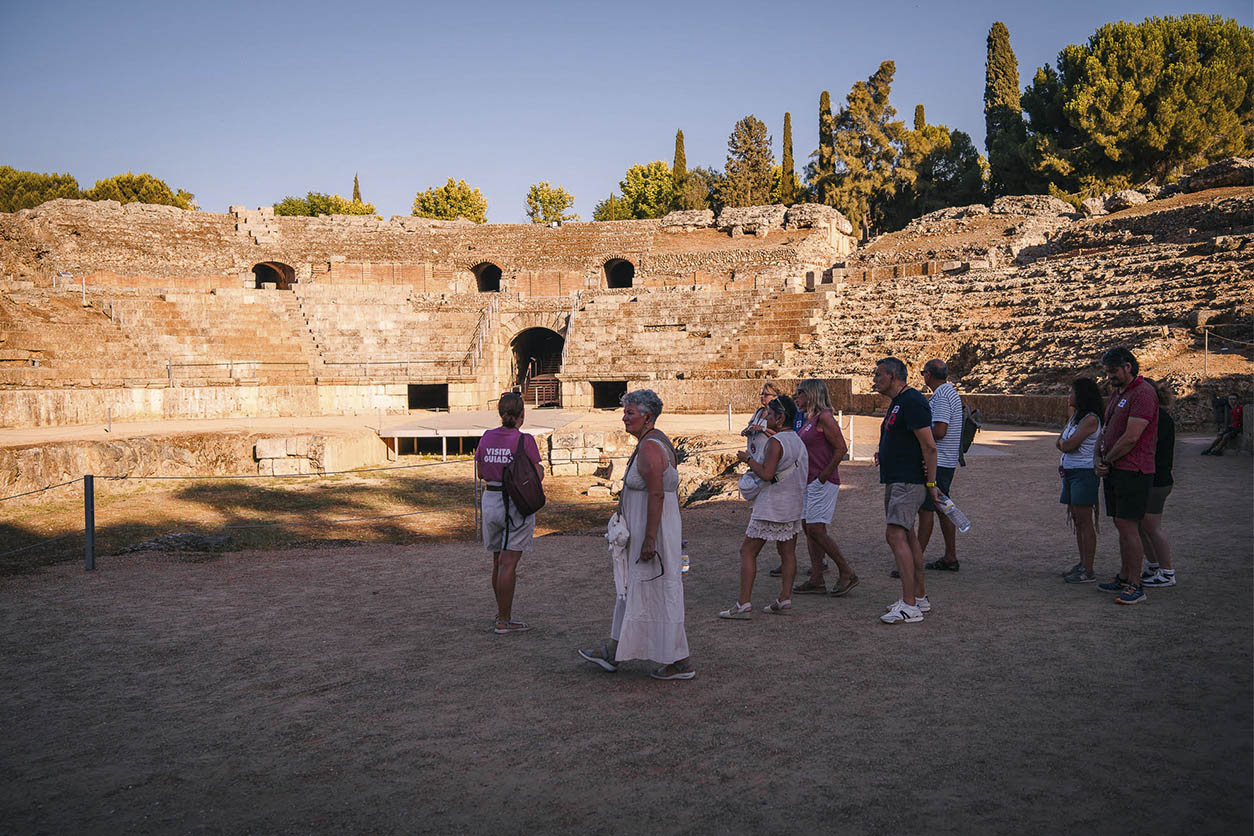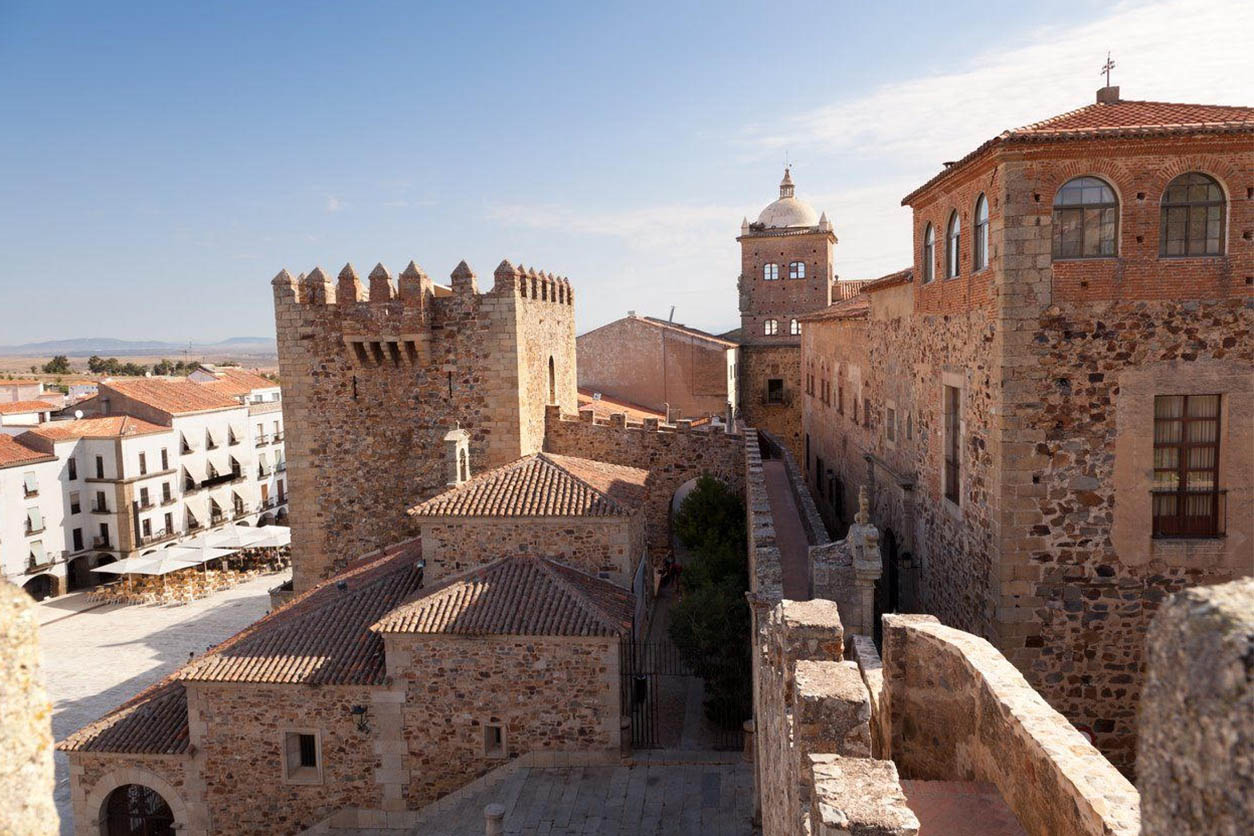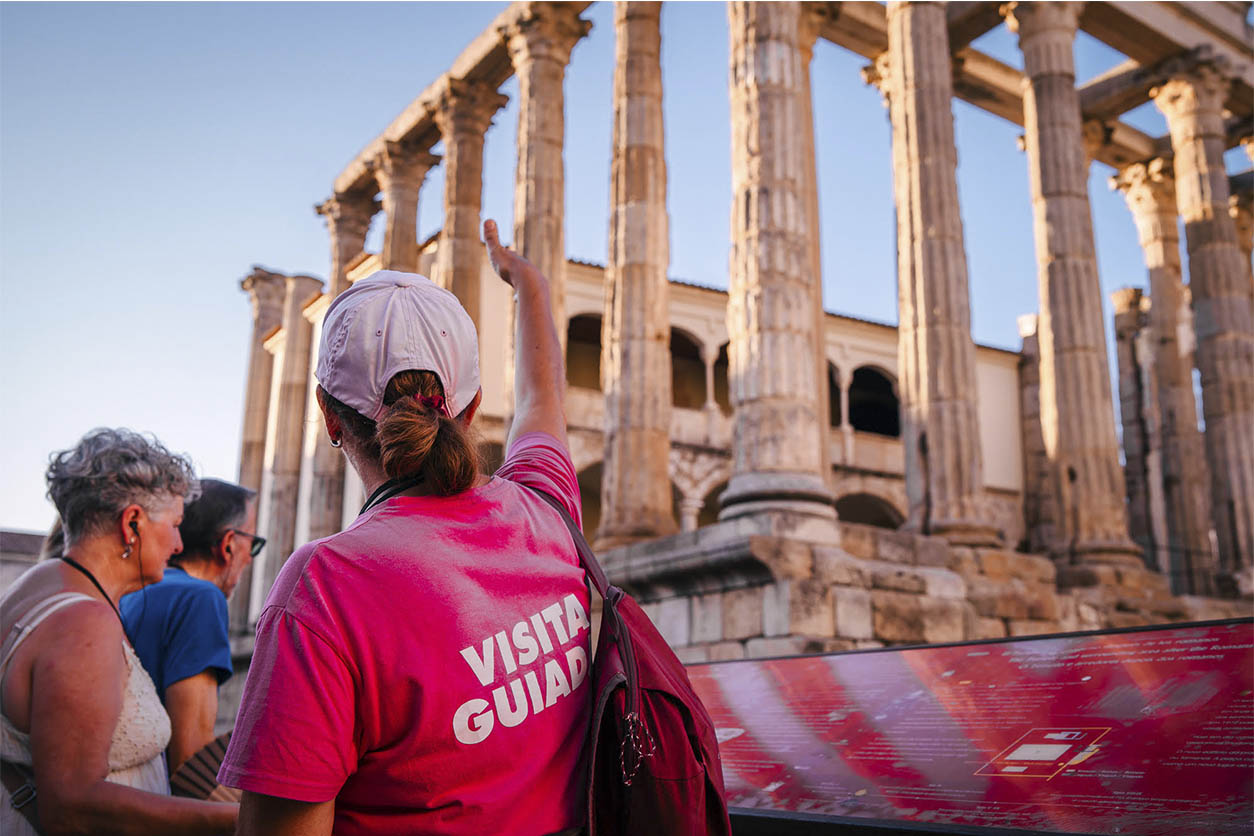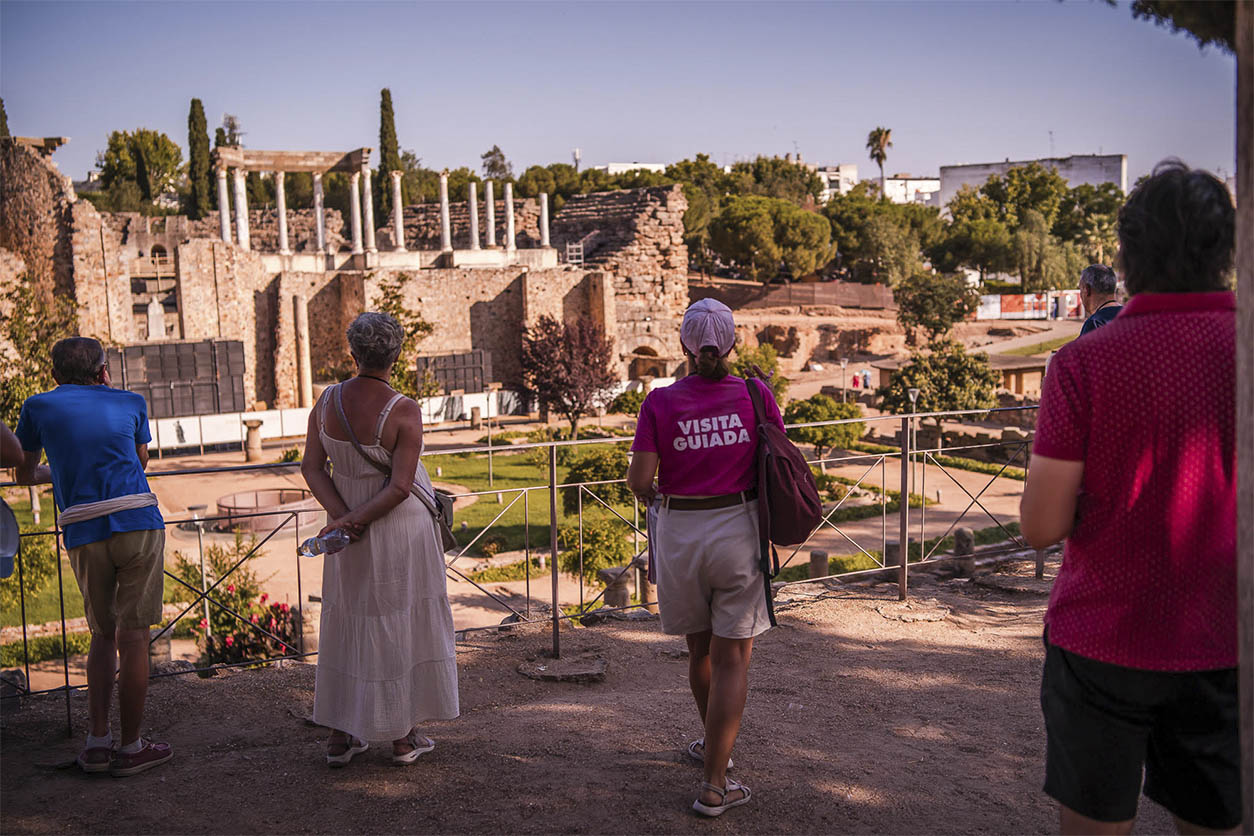Hervás is the capital of the ethereal Valle del Ambroz, located in the north of the province of Cáceres. It goes without saying that Extremadura is dotted with enchanting, century-old towns and villages, but there is something especially alluring about Hervás. Perhaps, it is the 13th-century architecture that has withstood the test of time and the passage of different religious powers. Or maybe it is the surrounding lush countryside, replete with natural wonders. Whatever the reason may be, you’ll feel as if you’ve stepped back in time to when Jews and Christians lived side-by-side in this century-old enclave. In fact, Hervás harbours one of the best-preserved Jewish Quarters in Spain with its iconic traditional wood and sun-dried brick buildings with handsome balconied façades. It has been declared a Historical Heritage Site.
Hervás also boasts other noteworthy landmarks such as the 17th-century Iglesia de San Juan; the Baroque-style Casa de los Dávila; and the 13th-century Iglesia de Santa María, built on the site of a Templar fortress. The town’s origins can be traced back as far as the 12th century when Templar knights built a hermitage. It was only in the 15th century that an important Jewish community settled Hervás, forever shaping the town’s architectural and cultural DNA. Come discover the incredible history, architecture and culture of picturesque Hervás, located a mere 113 km from the city of Cáceres.
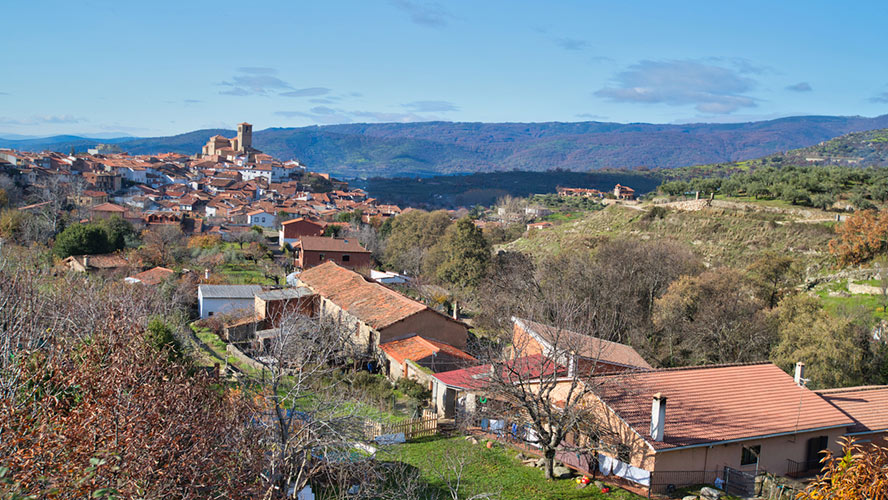
Hervás, conveniently communicated remoteness
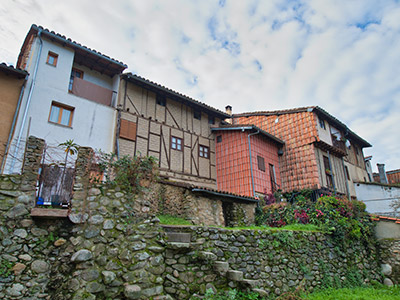
Hervás may lie in a privileged, peaceful enclave, but it offers a wide selection of services to make your holiday as enjoyable as possible. The lively village is anything but sleepy. Enjoy tasty, traditional dishes at any of the tapas bars and restaurants; stay at comfortable bed and breakfasts; and pick up a souvenir or two at the shops. You’ll be pleasantly surprised with what this town has to offer.
It goes without saying that a trip to Hervás includes a visit of the time-worn Jewish Quarter. The town is also home to the Museo de la Moto y el Coche Clásico where you can get a look at a unique collection of 20th-century motorcycles and cars.
The Jewish Quarter of Hervás
The Jewish Quarter of Hervás remain largely unchanged since it was first built centuries ago. As you meander along the narrow, cobble-stoned streets, flanked with the traditional, age-old wood and sun-dried brick buildings with balconied façades, you’ll notice street names such as ‘La Sinagoga’ and ‘Rabilero’, a testament of the town’s Jewish cultural and architectural heritage. Although the first Jewish settlement can be traced back to the 14th century, the only existing documentary evidence dates from the 15th century. It demonstrates that the Jewish families who settled in Hervás and the surrounding area were mostly traders and artisans, such as tailors, tanners, cobblers, and money lenders.
The Jewish Quarter of Hervás is a picturesque labyrinth composed of age-old homes made from local chestnut and oak wood, and sun-dried brick. Stacked one after the other along steep, narrow, cobble-stoned streets, the Quarter offers a unique glimpse at centuries past. You can even walk along Spain’s narrowest street, Travesía del Moral, which is no more than an astounding 50-cm wide! Maybe not best to explore after a hearty Extremenian meal! The Jewish Quarter of Hervás runs from the main town plaza to the Ambroz River and Chiquita Spring.
One of the most popular festivals the town hosts is Fiesta de los Conversos. This annual cultural festival seeks to raise awareness about the rich Jewish and Christian heritage that Hervás inherited. A fantastic line-up of concerts, plays and culinary events pay tribute to this epic historical period. In fact, the entire village dresses up in period clothing to recreate life in medieval Hervás.
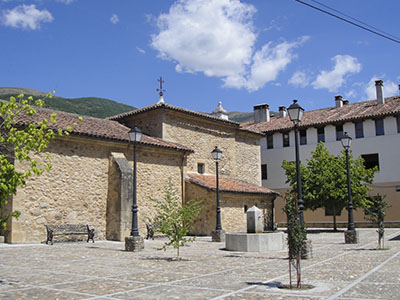
Museo de la Moto y el Coche Clásico
The Museo de la Moto y el Coche Clásico is a motor enthusiast’s dream-come-true. In fact, it was created by one, Juan Gil Moreno. It first opened its doors almost 20 years ago in a unique setting up in the mountains. The location boasts spectacular views of the village and valley. The fascinating collection includes motorcycles and cars from between the1920s and the 1970s
The building is comprised of eight pavilions, showcasing models from legendary brands such as Harley Davidson, BMW and Zündapp. There is an exhibition dedicated solely to the first vehicles we ever use such as buggies and tricycles. You can even visit a restoration workshop and see how the vehicles on display are restored. The museum provides an interesting retrospective on how the industry has evolved over the course of the last century. This is a fun activity if you are travelling with children as they will be captivated by the various models on exhibition. The museum is open Tuesday to Sunday. Please visit the museum website for up-to-date information on opening hours.




































































